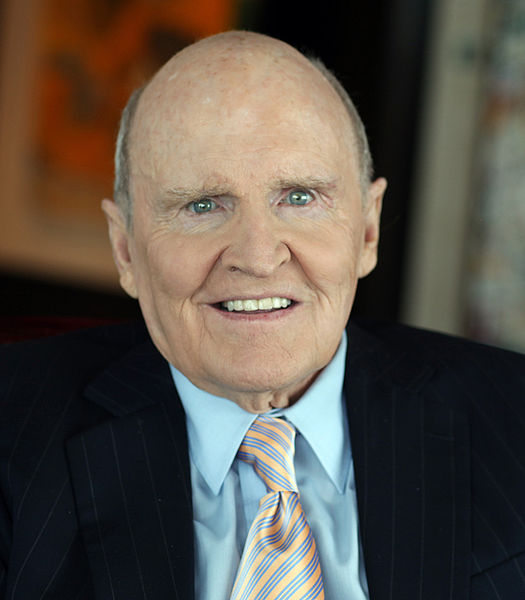Retail Titans Unveiled: Leadership Lessons from Walmart’s Odyssey

Setting Sail: Unearthing Leadership Wisdom in Walmart’s Journey
In the vast and ever-evolving landscape of global commerce, where retail titans rise and fall with the tides of consumer demand, one company stands as a monolithic testament to enduring success: Walmart. The name itself evokes images of sprawling supercenters, the bustling aisles of consumables, and a brand that has become synonymous with convenience and affordability. Yet, behind this colossal retail empire lies a story not only of relentless expansion but also of profound leadership acumen—a story rich with invaluable lessons for aspiring leaders and seasoned executives alike.
Walmart, a name that resounds in countless households worldwide, has etched an indelible mark on the annals of business history. Its journey, from the humble beginnings of a single store in Rogers, Arkansas, to a sprawling global network of over 10,000 stores in more than 20 countries, is a case study in ambition, innovation, and relentless adaptation. What makes this narrative all the more compelling is the role that leadership has played, and continues to play, in Walmart’s exceptional trajectory.
This article embarks on a captivating exploration of the leadership lessons that lie hidden within the sprawling aisles of Walmart’s story. Drawing from over four decades of experience in the field of leadership development, we delve into the annals of this retail giant’s history to uncover the wisdom, strategies, and principles that have guided its leadership, enabling it to scale staggering heights while navigating the tempestuous seas of the retail industry.
In a world where corporate lifespans are often measured in decades rather than centuries, Walmart’s remarkable endurance is a testament to the enduring power of visionary leadership. At the helm of this global behemoth, Sam Walton, the company’s founder, cast a far-reaching vision that has persisted long after his passing. His story, along with those of the leaders who have succeeded him, paints a vivid portrait of leadership’s pivotal role in shaping the destiny of a multinational conglomerate.
Walmart’s leadership philosophy, encapsulated in its core principles, is a roadmap for success that transcends the confines of the retail sector. We will dissect these principles, tracing their evolution through the years, and discerning the threads that tie them together into a coherent tapestry of leadership excellence.
But Walmart’s story isn’t just about principles and philosophies; it’s about tangible results. We will explore how these leadership principles have translated into remarkable achievements—be it the relentless commitment to customer-centricity, the mastery of supply chain logistics, the nurturing of a unique corporate culture, or the strides taken in ethical leadership and corporate responsibility.
While Walmart’s journey is undoubtedly marked by towering successes, it has not been without its fair share of challenges and controversies. We will shine a spotlight on these dark moments, for within them, too, lie invaluable lessons about leadership resilience and the art of course correction.
Furthermore, this article will showcase the human side of leadership at Walmart by bringing to life the stories of notable leaders who have left their mark on this corporate titan. These stories, drawn from the front lines of the retail giant, offer insights into the qualities and strategies that have propelled individuals to leadership prominence within the organization.
As we navigate through the myriad facets of Walmart’s leadership journey, we aim to distill a compendium of wisdom—a treasure trove of insights that can be applied across industries and organizational sizes. Whether you are a seasoned executive seeking fresh perspectives or an emerging leader looking to carve your own path to success, the leadership lessons of Walmart are an invaluable compass in today’s turbulent business terrain.
So, embark with us on this enlightening odyssey through the labyrinthine corridors of one of the world’s most iconic retailers, and discover how the leadership lessons from Walmart can illuminate your own journey toward leadership greatness.
The Walmart Story: From Humble Beginnings to Global Dominance
In the annals of corporate history, few tales rival the remarkable ascent of Walmart—a story that begins not with grandeur, but with simplicity, tenacity, and an indomitable spirit. To truly appreciate the leadership lessons woven into the fabric of this retail behemoth, one must embark on a journey through the chronicles of its founding, early years, and the relentless pursuit of Sam Walton’s vision.
Founding and Early Years
Walmart’s origins are rooted in the heartland of America, in the small town of Rogers, Arkansas. In 1962, Sam Walton opened the doors of his first discount store, aptly named “Walton’s Five and Dime.” It was a modest enterprise by all accounts, occupying a humble 16,000 square feet, but it was here that the seeds of Walmart’s unparalleled success were sown.
Sam Walton’s leadership style was distinct from the outset. He was known for his hands-on approach, often rolling up his sleeves to stock shelves and engage with customers. This approachability not only endeared him to his employees but also provided a firsthand understanding of the operational intricacies of his business—an insight that would prove invaluable as Walmart expanded.
Central to Walton’s leadership was an unwavering commitment to value and customer satisfaction. He believed that by offering customers quality products at unbeatable prices, he could build a loyal and growing customer base. This customer-centric ethos became the cornerstone of Walmart’s early success.
Walmart’s Growth Trajectory
From its modest beginnings, Walmart embarked on a trajectory of explosive growth. The first Walmart Discount City store opened in 1969 in Rogers, Arkansas, marking the beginning of a retail revolution. This was no ordinary growth; it was a calculated expansion driven by astute leadership.
Key elements of this expansion included a relentless focus on operational efficiency, the introduction of innovative supply chain practices, and the establishment of a culture that prized thriftiness and continuous improvement. These elements formed the pillars of Walmart’s leadership philosophy and set the stage for the company’s meteoric rise.
The Evolution of Walmart’s Leadership Team
As Walmart expanded, so did its leadership team, reflecting the company’s commitment to nurturing talent from within. One of the key leadership lessons from Walmart is the emphasis placed on developing leaders who understood and embodied the company’s values and culture.
Sam Walton’s family, including his brother Bud Walton, played pivotal roles in the company’s leadership. However, Walmart also recognized the importance of bringing in external talent to complement its homegrown leaders. This mix of perspectives and experiences enriched Walmart’s leadership pool and contributed to its ability to adapt and innovate.
The transition of leadership from Sam Walton to his successors was a critical juncture in Walmart’s history. It showcased the importance of succession planning and continuity in leadership—a lesson that remains relevant for organizations of all sizes.
In the next section of this article, we will delve into the specific leadership principles that underpinned Walmart’s remarkable journey and continue to shape its leadership legacy. From visionary leadership to ethical governance, each principle represents a valuable piece of the puzzle that has propelled Walmart to the forefront of the global retail landscape.
Leadership Philosophy at Walmart: The Pillars of Enduring Success
Walmart’s sustained dominance in the fiercely competitive retail industry is not merely a product of chance; rather, it is a result of a well-defined leadership philosophy that has guided the company through triumphs and tribulations alike. At the core of this philosophy lie a set of principles and values that have evolved and adapted over time, forming the bedrock upon which Walmart’s leadership legacy rests.
Overview of Walmart’s Leadership Principles
Walmart’s leadership philosophy is encapsulated in a set of principles that permeate every facet of the organization. These principles serve as guiding lights for leaders at all levels, offering a clear roadmap for decision-making and behavior. While these principles have evolved since the company’s inception, their essence remains rooted in the core values of thriftiness, customer focus, and a commitment to associates.
-
Everyday Low Prices (EDLP): At the heart of Walmart’s philosophy is a relentless commitment to offering consumers unbeatable value through everyday low prices. This principle emphasizes the importance of efficiency in operations, supply chain optimization, and cost control to pass on savings to customers. The EDLP strategy has not only shaped Walmart’s competitive advantage but also instilled a culture of frugality throughout the organization.
-
Customer Focus: The adage “the customer is always right” is not just a slogan at Walmart; it’s a fundamental belief. Customer satisfaction is paramount, and leaders are encouraged to listen to and understand the needs of their customers. This focus on customer-centricity has allowed Walmart to adapt and evolve its offerings to meet changing consumer preferences.
-
Respect for the Individual: Walmart’s leadership philosophy emphasizes the importance of respecting and valuing every individual, be it customers, associates, or suppliers. This principle extends to fostering diversity and inclusion within the organization, recognizing that a diverse workforce brings a variety of perspectives and ideas that fuel innovation.
-
Striving for Excellence: Continuous improvement is woven into the fabric of Walmart’s culture. Leaders are expected to set high standards, encourage innovation, and drive for excellence in every aspect of the business. This commitment to excellence has been instrumental in Walmart’s ability to adapt to evolving market dynamics.
How Walmart’s Leadership Philosophy Has Evolved Over Time
While these core principles have remained constant, Walmart’s leadership philosophy has evolved in response to changing market conditions, societal expectations, and the company’s own growth. One notable evolution is the shift towards sustainability and corporate responsibility.
In recent years, Walmart has embraced sustainability as a key component of its leadership philosophy. The company has set ambitious sustainability goals, such as achieving zero waste and using 100% renewable energy. This shift reflects not only a response to environmental concerns but also a recognition of the growing importance of sustainability in business leadership.
Another evolution is the emphasis on digital transformation and e-commerce. As consumer preferences shifted towards online shopping, Walmart adapted its leadership approach to embrace technology and innovation, recognizing that digital leadership would be essential in the 21st century retail landscape.
The Role of Servant Leadership at Walmart
One distinctive feature of leadership at Walmart is the concept of servant leadership, which emphasizes the leader’s role in serving their team and enabling their success. This approach encourages leaders to be empathetic, humble, and focused on the well-being of their associates. It’s a philosophy that echoes the values of the company’s founder, Sam Walton, who often referred to associates as “associates” rather than employees, emphasizing their integral role in the Walmart family.
Servant leadership has not only contributed to a positive workplace culture at Walmart but has also fostered a sense of ownership and empowerment among associates, enabling them to take initiative and contribute to the company’s success.
In the upcoming sections of this article, we will delve deeper into the specific leadership lessons derived from Walmart’s enduring principles and values. From visionary leadership and customer-centricity to supply chain mastery and ethical governance, each lesson is a testament to the wisdom and adaptability that have propelled Walmart to the pinnacle of global retail leadership.
Leadership Lessons from Walmart: Unpacking the Success Formula
The Walmart story is a testament to the fact that leadership, when driven by enduring principles and visionary thinking, can transform a small discount store into a global retail giant. As we delve into the leadership lessons drawn from Walmart’s journey, we uncover not just strategies for retail success, but insights applicable to leadership in any industry.
Visionary Leadership
-
Sam Walton’s Vision: At the heart of Walmart’s ascent lies the visionary leadership of its founder, Sam Walton. His vision was not just about building stores; it was about creating a retail empire that offered unprecedented value to customers. Leaders at all levels can draw from this lesson: a clear and compelling vision is the North Star that guides an organization toward greatness.
-
Setting Clear Goals and Objectives: Walmart’s success was not accidental but the result of meticulous goal-setting. Leaders can learn the importance of setting SMART (Specific, Measurable, Achievable, Relevant, Time-bound) goals and creating a roadmap for their teams to achieve them.
Customer-Centric Leadership
-
Customer Focus as a Core Value: Walmart’s commitment to its customers is non-negotiable. Leaders can emulate this by instilling a customer-centric mindset in their teams, encouraging regular feedback, and using data-driven insights to make customer-driven decisions.
-
Strategies for Maintaining Customer-Centricity: Walmart’s ability to maintain its customer-centric focus even as it grew into a global powerhouse is a case study in itself. Leaders must prioritize customer satisfaction and continuously adapt their strategies to meet evolving customer needs.
Innovation and Adaptability
-
Responding to Changing Market Dynamics: The retail industry is notoriously fickle, yet Walmart’s ability to adapt to changing market dynamics is remarkable. Leaders should encourage a culture of innovation and agility within their organizations, enabling them to pivot when necessary and seize new opportunities.
-
Fostering Innovation and Adaptability: Walmart’s leadership emphasizes innovation through initiatives like Walmart Labs and strategic partnerships. Leaders should actively promote and support innovation, providing resources and encouragement for experimentation and creativity.
Supply Chain Mastery
-
Supply Chain Innovations: Walmart revolutionized the retail industry with innovations like the use of barcode scanning and efficient inventory management. Leaders should recognize the strategic importance of supply chain optimization and invest in technologies and processes that enhance efficiency.
-
Leadership Lessons in Optimizing Supply Chains: Walmart’s supply chain leadership is a masterclass in logistics. Leaders can learn the importance of optimizing the entire supply chain, from sourcing to distribution, to deliver value to customers.
People Development and Culture
-
Nurturing a Unique Corporate Culture: Walmart’s culture is distinct, emphasizing camaraderie, thriftiness, and a commitment to associates. Leaders must recognize the role of culture in shaping behavior and outcomes, and actively foster a positive, inclusive, and values-driven culture.
-
Strategies for Talent Development and Retention: Leaders should prioritize the development of their teams, offering training, mentorship, and growth opportunities. Walmart’s focus on promoting from within serves as a model for building a pipeline of capable leaders.
Ethical Leadership
-
Walmart’s Journey Towards Ethical Leadership: Walmart’s path to ethical leadership was marked by challenges and controversies, but it also demonstrated the company’s commitment to doing the right thing. Leaders must understand that ethical leadership is not a destination but a continuous journey that requires vigilance and accountability.
-
Promoting Corporate Responsibility: Leaders can follow Walmart’s lead in embracing corporate responsibility by setting and upholding high ethical standards, engaging in philanthropy, and addressing social and environmental issues proactively.
Global Expansion and Multicultural Leadership
-
Challenges and Successes of Global Expansion: Walmart’s global journey was not without hurdles, but its ability to adapt to diverse markets showcases the importance of multicultural leadership. Leaders in an increasingly globalized world must understand the nuances of different cultures and markets to succeed.
-
Leading Diverse and Multicultural Teams: Leaders can glean valuable insights from Walmart’s experience in leading diverse teams. Embracing diversity and fostering inclusivity can lead to innovative solutions and better decision-making.
In the subsequent sections of this article, we will delve into the specific leadership challenges and controversies that Walmart faced, along with the leadership stories of notable figures within the company. These narratives will further illuminate the practical application of the leadership lessons drawn from Walmart’s remarkable journey.
Leadership Challenges and Controversies: Navigating Stormy Waters
Walmart’s storied journey to retail supremacy has not been without its share of tumultuous waters. The company has weathered numerous storms, encountered formidable challenges, and grappled with controversies that have tested the mettle of its leadership. In this section, we explore these pivotal moments and the invaluable leadership lessons derived from navigating adversity.
Overview of Major Leadership Challenges and Controversies
Walmart’s rise to prominence has often been punctuated by critical junctures, each presenting unique trials for its leadership. While these challenges have varied in nature, they collectively underscore the complexity of leading a global retail powerhouse. Some of the noteworthy challenges and controversies include:
-
Labor Relations: Walmart has faced long-standing criticism and labor disputes, primarily related to issues such as wages, working conditions, and employee rights. These challenges have required leadership to strike a delicate balance between corporate interests and the well-being of its workforce.
-
Anti-Competitive Practices: As a dominant force in retail, Walmart has been subject to antitrust concerns and accusations of stifling competition. Leadership has had to navigate regulatory scrutiny while defending the company’s market position.
-
Global Expansion and Localization: Expanding into diverse international markets introduced new challenges related to cultural differences, legal frameworks, and consumer behaviors. Adapting the Walmart model to suit local conditions required a nuanced approach.
-
E-commerce Disruption: The rise of e-commerce and the dominance of digital players presented a formidable challenge to Walmart’s traditional brick-and-mortar model. Leadership had to spearhead a digital transformation to remain competitive.
-
Reputation Management: Walmart faced reputational challenges stemming from various controversies, including allegations of environmental damage, bribery scandals, and ethical concerns. Leaders were tasked with rebuilding trust and upholding the company’s values.
Lessons Learned from Addressing Leadership Challenges
-
Adaptability is Key: Walmart’s ability to adapt and evolve in response to shifting market dynamics is a testament to the importance of adaptability in leadership. Leaders must be agile and open to change, even when it challenges established norms.
-
Balancing Stakeholder Interests: Managing the competing interests of employees, shareholders, regulators, and consumers requires deft leadership skills. Leaders must weigh the impact of decisions on all stakeholders and prioritize ethical considerations.
-
Global Competence: Walmart’s global expansion highlighted the significance of cultural competence in leadership. Leaders must be attuned to the cultural nuances of different markets and develop strategies that resonate with local consumers.
-
Innovation and Transformation: The disruption posed by e-commerce underscored the critical role of innovation in leadership. Leaders must foster a culture of innovation and be willing to make bold strategic moves to stay relevant.
-
Ethical Leadership is Non-Negotiable: Addressing reputational challenges required a commitment to ethical leadership. Leaders must lead by example, uphold ethical standards, and take swift action to rectify any ethical breaches.
-
Resilience and Long-term Vision: Walmart’s leadership faced numerous setbacks but persevered with a long-term vision. Leaders must cultivate resilience, maintain focus on their organization’s mission, and see beyond short-term obstacles.
In essence, the challenges and controversies that Walmart has confronted serve as a crucible that has tested the integrity, adaptability, and ethical compass of its leadership. These experiences have yielded a wealth of leadership lessons that resonate far beyond the realm of retail, offering insights that can guide leaders in navigating complex and dynamic business environments.
As we delve deeper into the leadership stories of notable figures within Walmart and examine the legacy of leadership at the company, these lessons will crystallize into actionable principles that can empower leaders to chart their own course toward success while staying true to their values.
Leadership Stories from Walmart: Illuminating the Path to Greatness
Behind every successful organization lies a tapestry of leadership narratives, each weaving its unique thread into the fabric of the company’s history. Walmart is no exception, and in this section, we unveil the stories of notable leaders whose contributions have left an indelible mark on the retail giant.
Profiles of Notable Leaders in Walmart’s History
-
Sam Walton – The Visionary Pioneer: No discussion of Walmart’s leadership is complete without honoring its founder, Sam Walton. His story is one of tenacity, innovation, and relentless pursuit of a vision. Walton’s hands-on leadership style, his unwavering commitment to everyday low prices, and his knack for fostering a down-to-earth corporate culture have become legendary. His story epitomizes the power of a visionary leader in shaping an empire.
-
David Glass – The Steward of Growth: As Sam Walton’s successor, David Glass played a pivotal role in steering Walmart through its formative years. Under his leadership, the company expanded exponentially, embracing cutting-edge supply chain technology and navigating the complexities of globalization. His legacy underscores the importance of effective succession planning and continuity in leadership.
-
Lee Scott – The Sustainability Champion: Lee Scott’s tenure as Walmart’s CEO marked a transformative phase for the company. He championed sustainability initiatives, making Walmart a global leader in environmental responsibility. His leadership demonstrated the capacity of a business leader to drive positive change not only within the organization but also in society at large.
-
Doug McMillon – The Digital Visionary: In the digital age, Doug McMillon has led Walmart into the future. As the company’s CEO, he has prioritized e-commerce and digital innovation, positioning Walmart to compete effectively in the evolving retail landscape. His leadership showcases the necessity of digital fluency and adaptability in contemporary leadership.
Anecdotes and Experiences that Showcase Leadership in Action
-
Sam Walton’s Store Visits: Sam Walton’s practice of regularly visiting Walmart stores, engaging with employees, and soliciting feedback from customers was not merely a show of leadership; it was a manifestation of his commitment to staying connected with the frontline. This hands-on approach continues to serve as a blueprint for leader-associate relations within the organization.
-
David Glass’s Global Expansion: Under David Glass’s leadership, Walmart embarked on an ambitious journey of global expansion. His emphasis on understanding local cultures and tailoring strategies to suit each market underscores the importance of cultural intelligence and adaptability in leadership.
-
Lee Scott’s Sustainability Initiatives: Lee Scott’s commitment to sustainability was exemplified by initiatives such as “Project Impact” and the sustainability index. These efforts, driven by ethical leadership, set the stage for Walmart’s ongoing commitment to environmental stewardship.
-
Doug McMillon’s Digital Transformation: Doug McMillon’s leadership has been characterized by a relentless focus on digital transformation. The strategic acquisitions of e-commerce companies like Jet.com and the integration of technology into the in-store experience underscore the imperative for leaders to drive technological innovation.
These leadership stories, drawn from the annals of Walmart’s history, serve as more than just anecdotes; they provide tangible illustrations of leadership principles in action. They highlight the importance of visionary thinking, adaptability, ethical stewardship, and a commitment to continuous improvement. Moreover, they exemplify how leadership can shape an organization’s trajectory and leave a lasting legacy.
As we traverse the final sections of this article, we will reflect on the enduring impact of leadership at Walmart and distill these narratives into actionable insights for leaders across industries. The leadership lessons derived from Walmart’s journey serve as guiding lights for those navigating the complexities of modern leadership, offering a compass for success while upholding ethical values and purpose-driven leadership.
The Legacy of Leadership at Walmart: Guiding Lights for Tomorrow’s Leaders
Walmart’s journey from a small discount store in Arkansas to a global retail juggernaut has not only reshaped the retail industry but has also imprinted a legacy of leadership excellence. The leadership principles, strategies, and experiences gleaned from Walmart’s remarkable history continue to resonate and inspire leaders across the world. In this section, we delve into the enduring impact of Walmart’s leadership and the lessons that future leaders can draw from this corporate titan.
The Enduring Impact of Walmart’s Leadership
-
A Blueprint for Success: Walmart’s ascent to retail preeminence serves as a blueprint for success in the modern business landscape. The company’s unwavering commitment to customer-centricity, everyday low prices, and continuous innovation has set a high bar for excellence that leaders can aspire to emulate.
-
Leadership as a Driver of Culture: Walmart’s unique corporate culture, characterized by thriftiness, respect for individuals, and a commitment to associates, has been molded by its leaders. This culture continues to foster employee engagement and loyalty, serving as a testament to the enduring impact of leadership on organizational ethos.
-
A Model for Ethical Leadership: Walmart’s journey from ethical challenges to embracing corporate responsibility underscores the importance of ethical leadership in today’s business environment. Leaders can learn that ethical conduct is not only a moral imperative but also a strategic asset.
Lessons for Future Leaders
-
Visionary Thinking: The story of Sam Walton exemplifies the transformative power of visionary thinking. Future leaders should cultivate the ability to envision a brighter future and articulate a compelling vision that inspires and mobilizes their teams.
-
Adaptability and Innovation: Walmart’s ability to adapt to changing market dynamics and embrace innovation is a lesson in staying relevant. Tomorrow’s leaders should be agile and open to new ideas, leveraging technology and data to drive progress.
-
Customer-Centricity: Walmart’s unwavering focus on customer satisfaction underscores the importance of keeping customers at the forefront of decision-making. Future leaders should prioritize understanding customer needs and delivering exceptional value.
-
Global Competence: Walmart’s global expansion and localization efforts highlight the significance of cultural intelligence in leadership. Leaders must be equipped to navigate the complexities of diverse markets and foster multicultural teams.
-
Ethical Stewardship: The ethical journey of Walmart showcases the importance of maintaining a strong ethical compass. Future leaders should prioritize ethics, integrity, and corporate responsibility as integral components of their leadership philosophy.
-
Resilience and Long-Term Vision: The resilience exhibited by Walmart’s leadership through challenging times serves as a reminder that long-term vision should guide decision-making. Leaders must persevere in the face of adversity, keeping their eyes on the horizon.
-
Leadership Development: Walmart’s emphasis on developing leaders from within the organization offers a valuable lesson in leadership development. Future leaders should invest in nurturing talent, providing mentorship, and building succession pipelines.
Applying Walmart’s Leadership Lessons Across Industries
While Walmart’s story is deeply rooted in the retail sector, its leadership lessons transcend industry boundaries. Leaders in finance, technology, healthcare, and myriad other fields can draw inspiration from Walmart’s timeless principles and experiences. Whether they seek to innovate, lead diverse teams, or uphold ethical standards, the leadership lessons derived from Walmart offer a versatile toolkit for success.
The leadership journey of Walmart is a remarkable narrative of ambition, vision, and resilience. It serves as a source of wisdom and inspiration for leaders, both emerging and seasoned, who aspire to shape their organizations into enduring and impactful entities. As we look to the future, the enduring legacy of leadership at Walmart stands as a guiding light, illuminating the path to greatness in a world of ever-evolving challenges and opportunities.
Navigating Leadership’s Retail Odyssey
As we conclude our exploration of leadership lessons drawn from the saga of Walmart, we find ourselves at the intersection of history, insight, and inspiration. The retail giant’s journey, spanning decades of growth, adaptation, and transformation, serves as a wellspring of wisdom for leaders across the spectrum of industries and organizations.
In this final section, we recap the key takeaways from our deep dive into Walmart’s leadership legacy and the stories that have defined it.
Key Leadership Lessons and Takeaways from Walmart’s Story
-
Visionary Leadership: Walmart’s founder, Sam Walton, demonstrated the profound impact of visionary thinking. Leaders should cultivate a clear and compelling vision that guides their organization toward greatness.
-
Customer-Centric Leadership: The customer-centric ethos at Walmart underscores the importance of prioritizing customer satisfaction and continually adapting to meet evolving customer needs.
-
Adaptability and Innovation: Walmart’s ability to adapt to changing market dynamics and embrace innovation is a lesson in staying relevant in a fast-paced world.
-
Supply Chain Mastery: Walmart’s supply chain innovations exemplify the strategic importance of optimizing supply chains for operational efficiency and customer satisfaction.
-
People Development and Culture: Nurturing a unique corporate culture and investing in talent development are essential for fostering a motivated and engaged workforce.
-
Ethical Leadership: Walmart’s ethical journey emphasizes the importance of upholding strong ethical standards and embracing corporate responsibility as integral to leadership.
-
Global Competence: Leading diverse and multicultural teams requires cultural intelligence and adaptability to thrive in global markets.
-
Resilience and Long-Term Vision: Resilience and a focus on long-term goals enable leaders to navigate adversity and maintain their organization’s trajectory.
Encouragement for Leaders to Apply These Lessons
The leadership lessons derived from Walmart’s story are not mere abstractions—they are actionable principles that leaders can apply in their own contexts. These lessons offer a roadmap for success, providing guidance on how to navigate the complexities and challenges of leadership in a rapidly evolving world.
Leaders are encouraged to reflect on their own leadership philosophies and practices, considering how they align with the principles exemplified by Walmart. Whether leading a multinational corporation, a small business, a non-profit organization, or a government agency, the universal principles of visionary thinking, adaptability, ethical stewardship, and customer-centricity can be applied to drive success and make a positive impact.
By embracing these lessons, leaders have the opportunity to not only excel in their roles but also leave a lasting legacy of leadership excellence, just as Walmart has done on the global stage.
The Ongoing Relevance of Walmart’s Leadership Lessons
Walmart’s story is not a static narrative but a living testament to the enduring relevance of leadership principles that stand the test of time. As the retail giant continues to evolve and adapt to new challenges, its leadership philosophy remains a source of strength and inspiration.
The leadership lessons from Walmart’s odyssey will continue to resonate with leaders of today and tomorrow. They are a testament to the transformative power of leadership guided by a clear vision, unwavering values, and a commitment to continuous improvement.
As leaders embark on their own leadership journeys, they can draw from the wellspring of wisdom that Walmart’s story offers, using it as a compass to navigate the intricate waters of leadership, shape their organizations for success, and leave a legacy that endures for generations to come.





